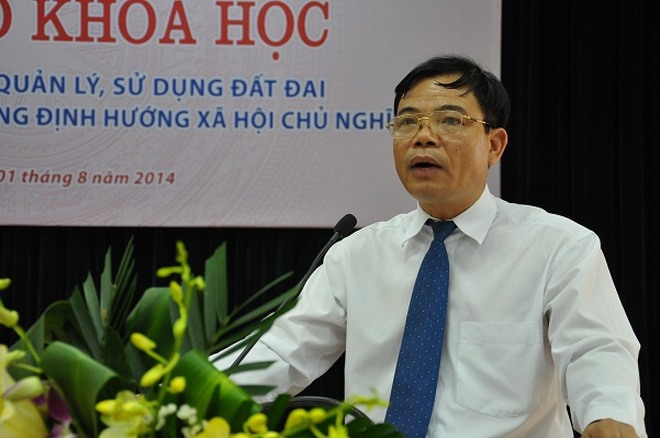 Opinion
Opinion

 |
| Nguyễn Xuân Cường |
Nguyễn Xuân Cường, Minister of Agriculture and Rural Development (MARD) talks to the Vietnam News Agency about future priorities for the agriculture sector.
In order to implement agriculture reforms, the ministry has highly rolled out the red carpet for enterprises, including foreign firms. The decree on attracting foreign direct investment (FDI) has been talked about for a while, but why hasn’t it been issued yet?
From now until 2020 and thereafter, the State budget won’t be able to meet the agriculture sector’s demand. Thus, attracting FDI is one of the measures under the ministry’s consideration.
The ministry had earlier developed a draft strategy to further attract FDI into the agro-forestry-fishery sector until 2030, and worked on a draft decree on policies needed to encourage foreign investment in the agricultural sector.
As Việt Nam integrates deeper into the world economy and joins several free trade agreements, the current policy is to treat domestic and foreign firms fairly. Thus, the Government has asked the agriculture ministry to make proper adjustments to the draft strategy on attracting foreign direct investment. Once this strategy is finalised, the decree on attracting FDI in the agriculture sector will be reviewed and amended. The revised strategy will be submitted to the Prime Minister for approval in the first quarter of this year.
What will be the priority areas for FDI firms?
The ministry will focus on areas that can create breakthroughs for the sector as well as areas of interest for foreign investors, like producing and developing new plant varieties and animal breeds including vegetables, flowers, corn, hybrid rice, domestic animals and forestry plants.
At the same time, priority will be given to the production of auxiliary materials to create added value, like production of animal feed, waste treatment technology in the livestock sector, automatic slaughter systems and dairy processing equipments, and equipment for production of veterinary drugs.
We will especially prioritise heat management technologies and ionizing radiation technology used in fruit exports.
Veterinary drugs production using new technology that does no harm to the environment will also be on the priority list.
Land is said to be an investment bottleneck for agriculture. How can this problem be solved?
It is true that at present the issue of land is a bottleneck in attracting enterprises to invest in agriculture. We have made long-term allocations of land to the people, and many farmers have small and scattered land holdings. So the issue arises that some firms want to do business in agriculture but they don’t have enough land.
In order to solve this problem, we need to continue implementing policies on accumulating land through consolidation so as to have large-sized farms. At the same time, we can continue to invest in building large fields to create concentrated material zones.
Enterprises have to play a leading role in associating with farmers and co-operatives to build and develop the value chain to produce goods required by the market.
In the long term, the ministry is working with the Central Economic Committee, Ministry of Natural Resources and Environment to study the proposed amendment of some provisions of the Land Law of 2013 in order to facilitate application of modern technology in agriculture production.
What are the opportunities and challenges for the agriculture sector in general, and in particular for agriculture, forestry and fisheries exports in 2017?
In 2017, the market for agricultural, forestry and fisheries products will expand, since Việt Nam has signed 12 free trade agreements and is negotiating five new agreements with 50 countries and economies.
Meanwhile, supporting policies and measures to remove difficulties for agriculture production and business development will continue to prove their effectiveness. The restructuring of the agricultural sector is being implemented aggressively, creating momentum for it to grow in the coming years.
However, certain difficulties will directly affect the consumption of agricultural, forestry and fisheries products this year. Global economic growth has been forecast to stay low this year.
The International Monetary Fund (IMF) has forecast that global economic growth in 2017 will fall from 3.7 per cent to 3.6 per cent or 3.4 per cent due to prolonged political and financial risks, the civil war in Syria, the financial market turmoil, the status of climate change and the impact of Brexit.
Besides, other countries have strengthened support for domestic agricultural production (China has a $450 billion support package for its agriculture sector), and Asian countries including Myanmar, Cambodia and Thailand are promoting the production and export of agricultural products. This means the competition will be more intense.
Additionally, with the demand for safe food products growing, the technical barriers of developed countries will be a challenge for our agricultural, forestry and seafood products.
Domestically, the agricultural sector has been negatively affected by climate change, compounded by harsh and unpredictable natural disasters, drought and salination.
This requires both immediate responses and long-term strategies to limit the damage caused to life, production and property. — VNS




